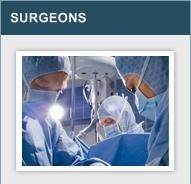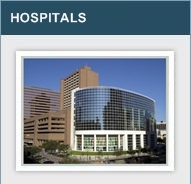What is it?
There is not enough blood getting down your leg to keep the foot and toes alive. The lack of blood causes severe pain and allows serious infection to take hold. The only choice is to cut off the damaged part. This must be done high enough to get proper healing of the stump. In your case it means an amputation just below your knee. Sometimes the amputation is needed because of a serious injury to the limb.
The Operation
You will have a general anaesthetic and be asleep or sometimes just an injection to numb you below the waist. If the latter takes place, you will be awake but you will not feel any pain from the waist down. A cut is made so that, after removing the diseased part, you end up with a rounded stump made of healthy skin. You should plan to be in the hospital for a month to cover any delay in healing of the wound. You may well be out before this. You may need alterations to your home, such as bath handles, and ramps, which will help you when you return. You will need to have a temporary wheelchair and learn how to use it.
Any Alternatives
If you leave things as they are, your leg will certainly get worse. Life threatening infection may start. An operation to bypass or core out your leg arteries will not work in your case. Laser treatment and X-ray guided stretching of the arteries will not work for you. Injecting the nerve to your blood vessels will not work. Antibiotics are not enough by themselves. An alternative to a below-knee operation is one higher up, such as through the knee, or at the mid-thigh level. But the higher the level, the greater the risks of the operation, and the smaller the chances of you walking again. A lower amputation such as through your toe or foot will not heal.
Before the operation
Stop smoking and get your weight down if your are overweight. (See Healthy Living). If you know that you have problems with your blood pressure, your heart, or your lungs, ask your family doctor to check that these are under control. Check the hospital's advice about taking the Pill or hormone replacement therapy (HRT). Check you have a relative or friend who can come with you to the hospital, take you home, and look after you for the first week after the operation. Bring all your tablets and medicines with you to the hospital.
On the ward, you may be checked for past illnesses and may have special tests to make sure that you are well prepared and that you can have the operation as safely as possible. Many hospitals now run special preadmission clinics, where you visit for an hour or two, a few weeks or so before the operation for these checks.
After - In Hospital
You may be given oxygen from a face mask for a few hours if you have had chest problems in the past. You will have a fine, thin plastic tube in your arm to give you a blood transfusion (if necessary) or salt solutions. You will have a fine, plastic drainage tube coming out of the skin near the wound, connected to a container. This is to drain any residual blood or other fluid form the area of the operation.
The wound is painful. You will be given injections and later tablets to control this. Ask for more if the pain is not well controlled or if it gets worse. Your original pain will have gone, but you may still feel as if the foot and toes are still there. This is called a "phantom limb" and is something that it is expected and something that most patients experience after an amputation. The phantom limb feeling may make you forget you have had an amputation. This feeling fades in time. By the end of one week the wound should be virtually pain-free. You will be helped out of bed after 24 hours. You should be sitting out of bed comfortably in a week. Always ask a nurse to help you get out of bed, or you may fall and injure yourself. You should be trying to walk with crutches in a week or so. A general anaesthetic will make you slow, clumsy and forgetful for about 24 hours. The nurses will help you with everything you need until you are able to do things for yourself. Do not make important decisions during this time. It is important that you pass urine and empty your bladder within 6 to 12 hours of the operation. You will need to use a bottle or a bed pan with help from the nurses at first. If you still cannot pass urine let the doctors and nurses know and steps will be taken to correct the problem. The wound has a simple dressing on it. The doctors will change the dressing every two to three days for two weeks after the operation to see if the wound is healing well. There will be stitches that will come out about two weeks after the operation. The wound drain is taken out after 48 hours or so.
When you first see the wound, the stump will look very bulgy, but this smoothes off after a week or two. The hospital will arrange for you to see the limb fitter once the wound is fully healed. But you will be practising walking with a temporary limb in the physiotherapy department before you see them. You can wash as soon as the dressing has been removed but try to keep the wound dry until the stitches come out. Soap and warm tap water are entirely adequate. Salted water is not necessary. You can shower or take a bath as often as you like. The nurses will advise about sick notes, certificates etc.
After - At Home
You are likely to feel tired and need to rest two or three times a day. You will gradually improve. You will be in the hands of the limb fitters once the wound has healed. It often takes three or more months before you have a limb which suits you exactly, since the stump is changing and firming up all the time. The physiotherapy department will continue your training. How soon you can drive again depends on how quickly you cope with the artificial limb. You may well be able to drive an automatic car or one specially modified for your needs. You can restart sexual relations once the wound is healed. How soon you can return to work depends on how quickly you heal up. It is unlikely that you could do a heavy manual job, but many other jobs are perfectly feasible.
Possible Complications
If you have this operation under general anaesthetic, there is a risk of complications related to your heart and lungs. The tests that you will have before the operation will make sure that you can have the operation in the safest possible way and will reduce the chances for such complications. The chance of dying after an amputation is 3 to 10%. The chances are higher for elderly people with other health problems such diabetes, or disease of the arteries that feed the heart with blood. More than 50% of the deaths after an amputation are because of heart problems and about 25% because of lung problems.
If you have an anaesthetic injection in the back, there is a very small chance of a blood clot forming on top of your spine which can cause a feeling of numbness or pins and needles in your legs. The clot usually dissolves on its own and this solves the problem. Extremely rarely the injections can cause permanent damage to your spine.
Chest infections may arise, particularly in smokers. Do not smoke. Being as mobile as possible and co-operating with the physiotherapists to clear the air passages is important in preventing chest infections. Another possible complication is the formation of clots in the deep veins (draining pipes for the blood) of your legs (deep vein thrombosis or DVT). A piece of one of these clots can get detached and "travel" all the way to the blood pipes of your lungs. There it can cause partial or complete obstruction of the blood vessels of the lungs which can be lethal. You will be given injections of blood thinners (heparin) after the operation to prevent a DVT. In addition, being as mobile as possible and co-operating with the nurses and physiotherapists after the operation are very important in preventing a DVT.
Slow healing is sometimes seen and shows up within the first week or two. The doctors will discuss this with you. Rarely, you might need another operation to clean any dying (necrotic) or tissue that is not healing well. Even more rarely, it may be necessary to amputate the leg higher up to be able to get in healthy margins that will heal well when they are stitched together.
Infection sometimes happens. This is usually localised in the wound area and very rarely spreads into your blood stream. You will be given antibiotics to prevent this and you will be given more if an infection actually occurs. The antibiotics take care of the problem in most cases, but there is a chance that you will need another operation to clean the infected tissues
Another possible complication after this operation is the development of pressure sores (openings in the skin which can be painful). This happens more frequently in areas of the body under pressure from the bed, the lower part of your back and the area close to your back passage being two typical examples. The use of special beds and mattresses as well as being as mobile as possible after the operation with the help of the nurses and the physiotherapists can help a lot in preventing pressure sores.
As we discussed, most patients feel (especially during the early days after the operation) that the limb is still there (phantom limb). In addition, a lot of patients feel pain in the limb area as if the limb was still there (phantom limb pain). This is usually mild to moderate and rarely severe pain and most of the time gets better as time goes by. In some cases the pain can last for a long time. If this happens the doctors will discuss the best way to deal with the problem.
Aches and twinges in the wound may be felt for six months or more but will settle down. Finally, some patients face psychological problems after the operation. The sense of loss and disability can be very frustrating at times. If this happens you will get the necessary psychological support that can effectively help you to overcome this problem.
General Advice
The operation must not be underestimated but you will end up much better off than before it. Most patients are able to walk without difficulty on the new limb. The fitting of the new limb is rather tedious and slow but is well worth it in the end. We hope these notes will help you through your operation. They are a general guide. They do not cover everything. Also, all hospitals and surgeons vary a little. If you have any queries or problems, please ask the doctors or nurses.





